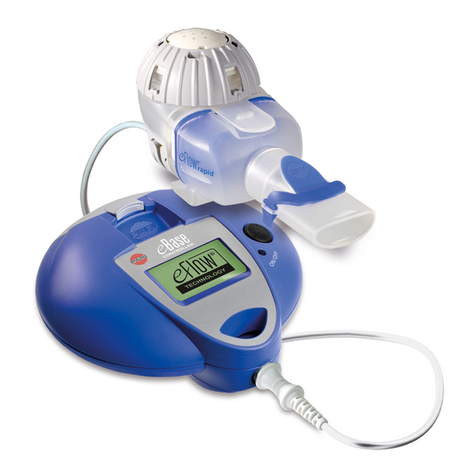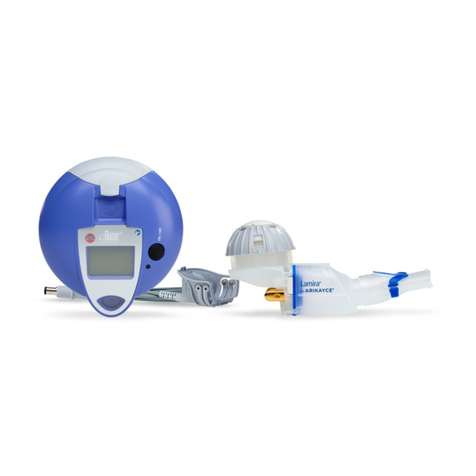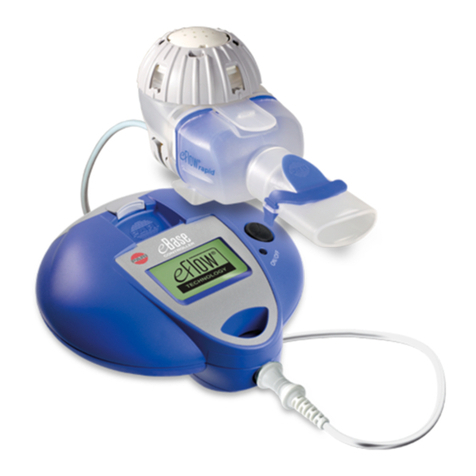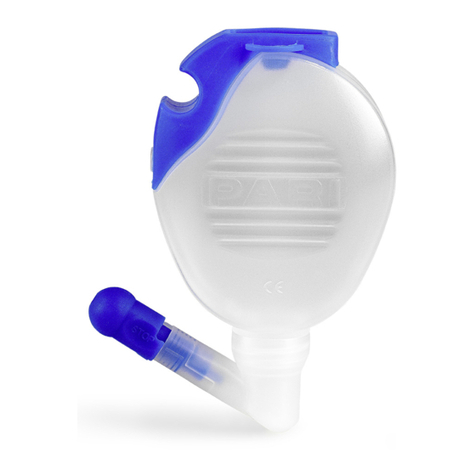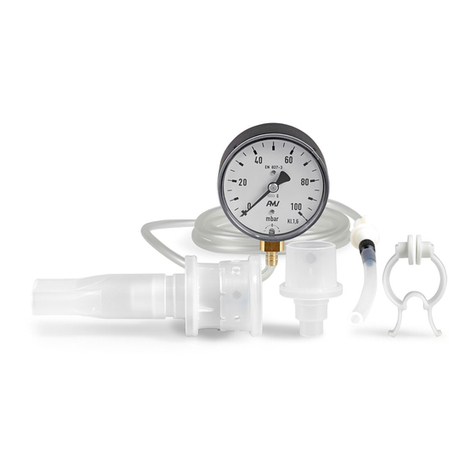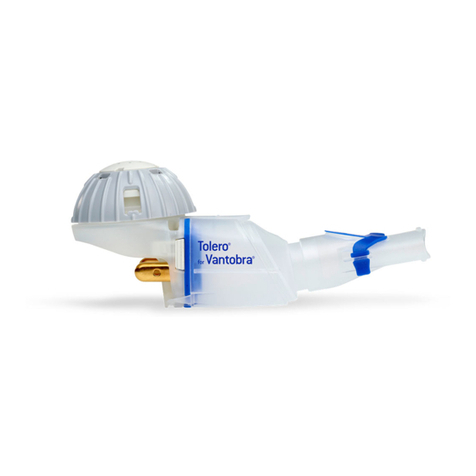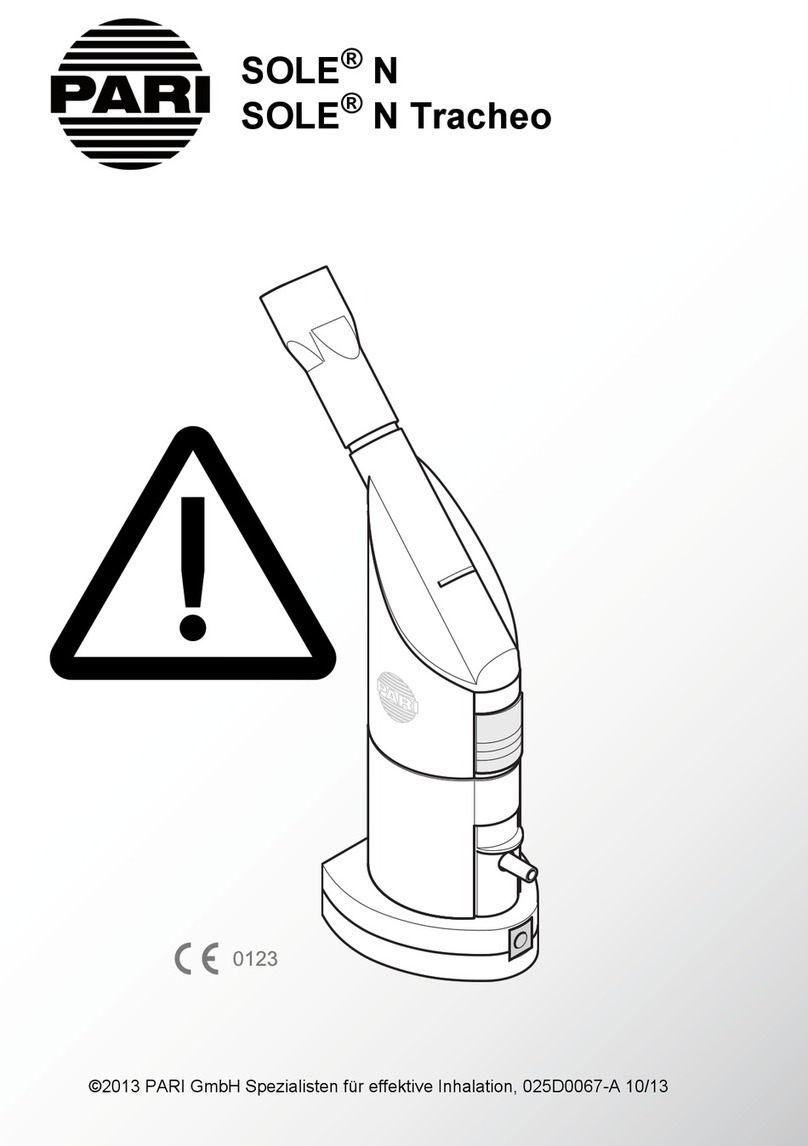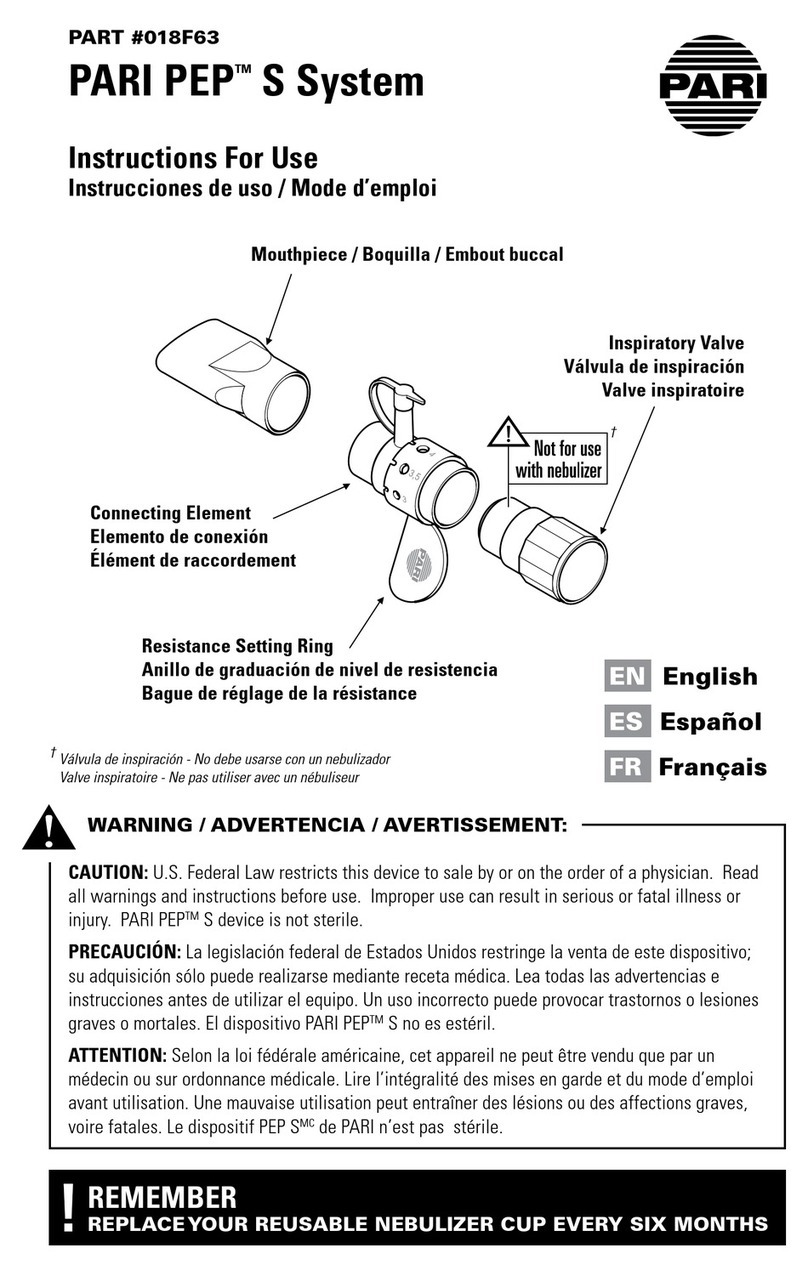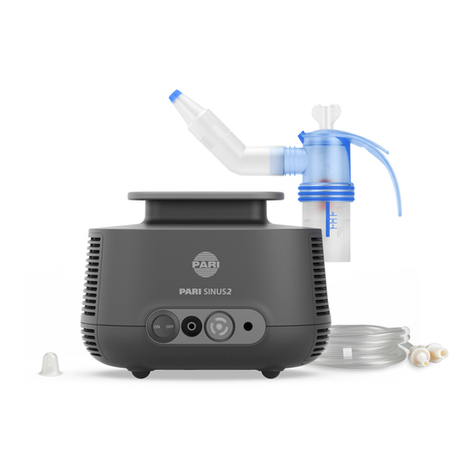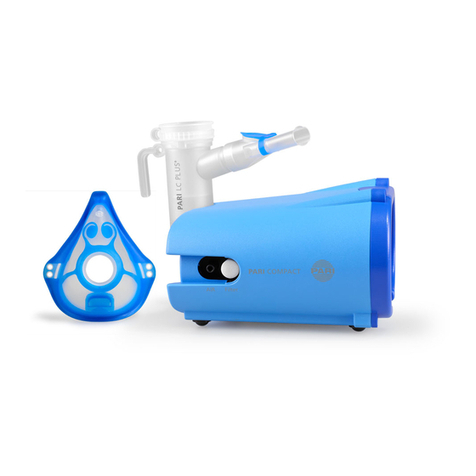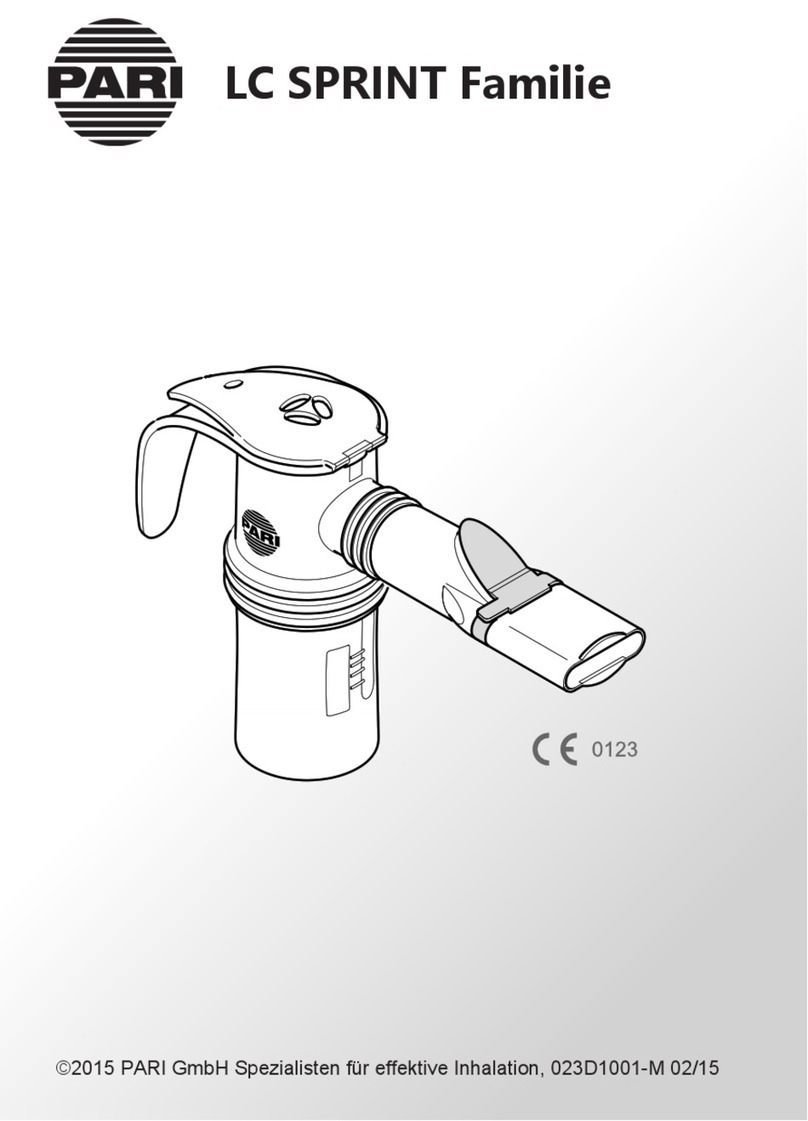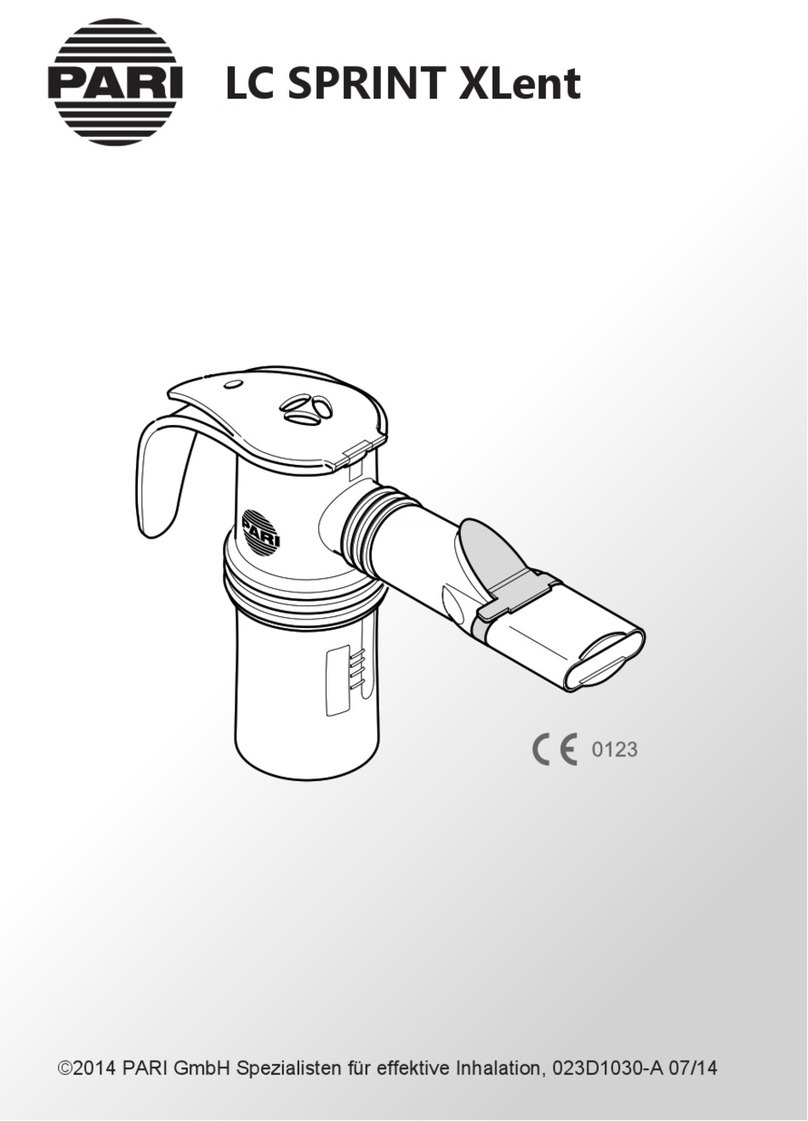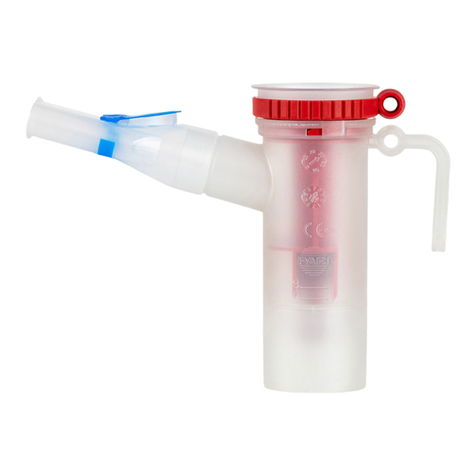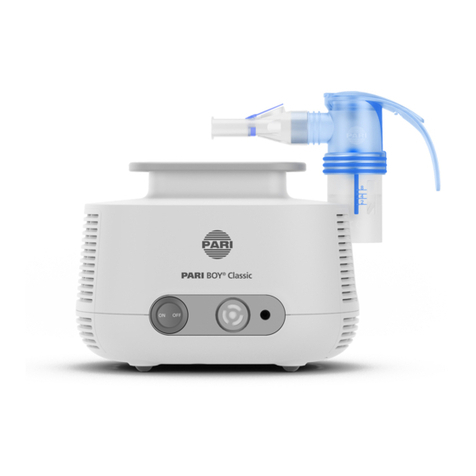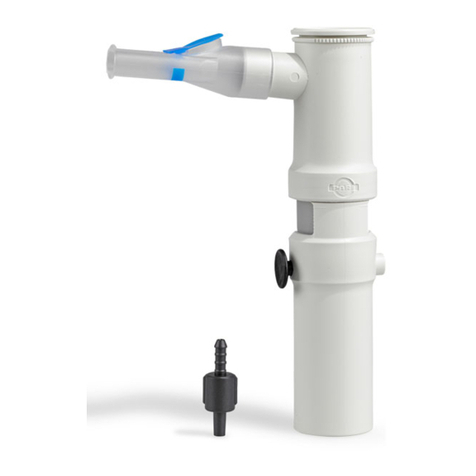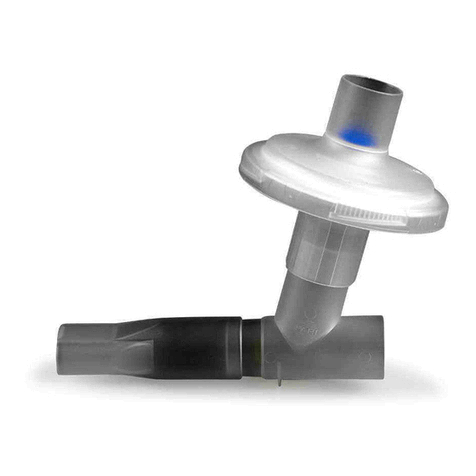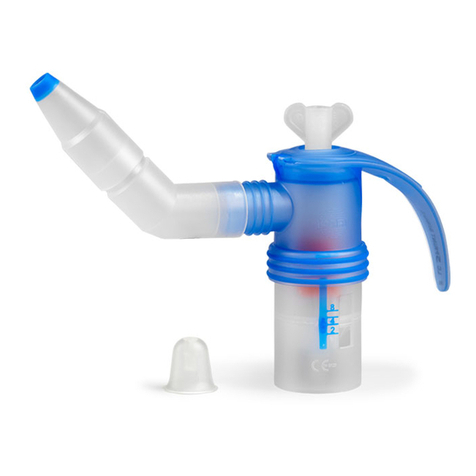IMPORTANT INFORMATION.......................................... 5
General............................................................................. 5
Information about the instructions for use ........................ 5
Structure of safety instructions ......................................... 5
Treatment of babies, children and anyone who requires
assistance ........................................................................ 6
Treatment of patients with a surgically created opening
in the windpipe (tracheostoma) ........................................ 6
Hygiene ............................................................................ 7
PRODUCT DESCRIPTION .............................................. 8
Components ..................................................................... 8
Intended purpose ............................................................. 9
Intended use..................................................................... 9
Contraindications.............................................................. 9
Product variants and combinations .................................. 10
Material information.......................................................... 10
Operating life .................................................................... 10
INHALATION ................................................................... 11
Assembling the nebuliser ................................................. 11
Filling with medication ...................................................... 12
Performing the inhalation ................................................. 14
CLEANING AND DISINFECTION AT HOME.................. 15
Preparation....................................................................... 15
Care of the connection tube ............................................. 15
Cleaning ........................................................................... 16
Disinfection....................................................................... 16
Visual inspection .............................................................. 21
Drying and storage ........................................................... 21
Instructions for use
Information as of: 2016-02. All rights reserved. Technical and design changes
and printing errors reserved. Principle shown in illustrations.
– 3 –

